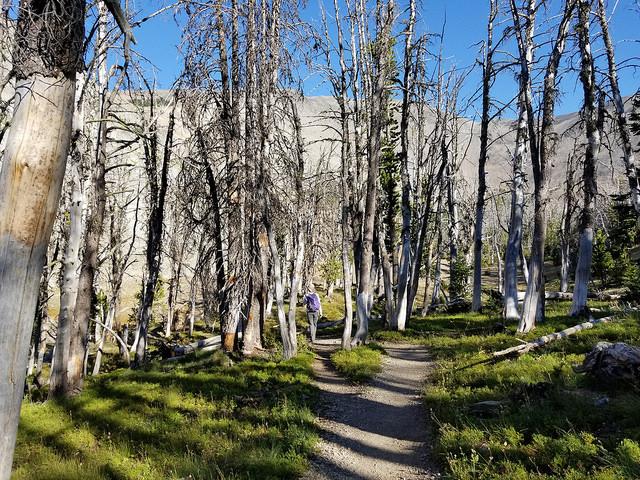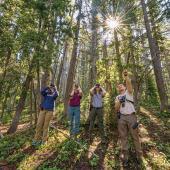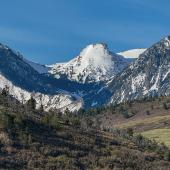Whitebark Pine
Are grizzlies in Yellowstone going hungry? Some scientists say if they aren’t now, they will be soon. A major source of food for grizzlies, the Whitebark Pine and their fat-rich nuts are threatened by a fungus known as Blister Rust.
Whitebark Pine trees grow at high altitudes and produce cones that cannot open without the help of animals. In order for the seeds to reach the ground, birds (like the Clark’s Nutcracker) and squirrels have to open the cones and bury the seeds. Later, grizzlies dig up the stashed nuts, which provide a necessary source of fat and protein before the bears settle down for the winter.
When an enterprising Canadian tree farmer brought European Pine seeds to Vancouver in the 1920s, he had no idea these seeds contained a fungus that North American pines had no defense against—and we’re seeing the repercussions of his mistake today. Blister Rust enters through the needles of pines and comes out in orange- or white-colored spores on the bark of the trees. Rodents eat these spores and at the same time eat away the inner and outer bark of the tree, eventually killing the tree and thus the bears’ food source.
In Glacier National Park, nearly 80% of all Whitebark Pine trees are either dead or dying. The Blister Rust fungus is slowly creeping down the Rockies and coming into the Yellowstone area. Scientists are currently monitoring the Whitebark Pines throughout the Greater Yellowstone Ecosystem in hopes of finding how many trees are infected and how to reverse this potentially devastating trend. How will our bears fare if this food source disappears? It may be only a matter of time before we find out.
For more information about Whitebark Pines and Blister Rust, contact the Whitebark Pine Ecosystem Foundation, P.O. Box 16775, Missoula, MT 59808 or on the web at whitebarkfound.org.













